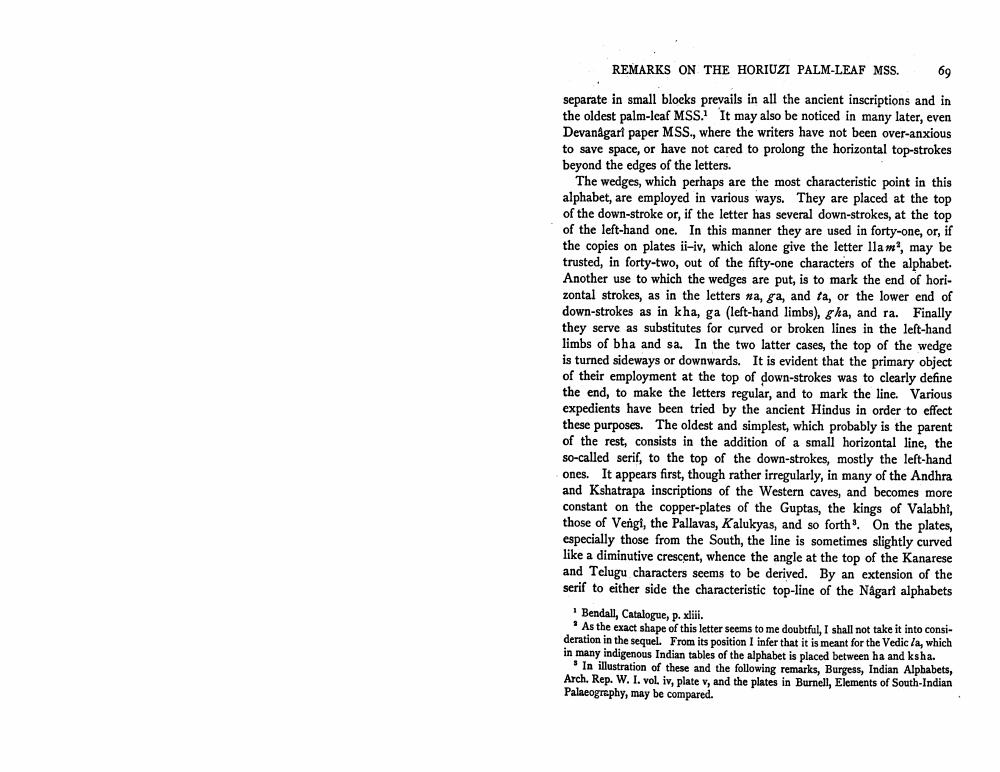________________
REMARKS ON THE HORIUZI PALM-LEAF MSS.
69
separate in small blocks prevails in all the ancient inscriptions and in the oldest palm-leaf MSS. It may also be noticed in many later, even Devanagari paper MSS., where the writers have not been over-anxious to save space, or have not cared to prolong the horizontal top-strokes beyond the edges of the letters.
The wedges, which perhaps are the most characteristic point in this alphabet, are employed in various ways. They are placed at the top of the down-stroke or, if the letter has several down-strokes, at the top of the left-hand one. In this manner they are used in forty-one, or, if the copies on plates ii-iv, which alone give the letter 11am, may be trusted, in forty-two, out of the fifty-one characters of the alphabet. Another use to which the wedges are put, is to mark the end of horizontal strokes, as in the letters na, ga, and ta, or the lower end of down-strokes as in kha, ga (left-hand limbs), gha, and ra. Finally they serve as substitutes for curved or broken lines in the left-hand limbs of bha and sa. In the two latter cases, the top of the wedge is turned sideways or downwards. It is evident that the primary object of their employment at the top of down-strokes was to clearly define the end, to make the letters regular, and to mark the line. Various expedients have been tried by the ancient Hindus in order to effect these purposes. The oldest and simplest, which probably is the parent of the rest, consists in the addition of a small horizontal line, the so-called serif, to the top of the down-strokes, mostly the left-hand ones. It appears first, though rather irregularly, in many of the Andhra and Kshatrapa inscriptions of the Western caves, and becomes more constant on the copper-plates of the Guptas, the kings of Valabhi, those of Vengi, the Pallavas, Kalukyas, and so forth. On the plates, especially those from the South, the line is sometimes slightly curved like a diminutive crescent, whence the angle at the top of the Kanarese and Telugu characters seems to be derived. By an extension of the serif to either side the characteristic top-line of the Nagari alphabets
Bendall, Catalogue, p. xliii.
As the exact shape of this letter seems to me doubtful, I shall not take it into consideration in the sequel. From its position I infer that it is meant for the Vedic la, which in many indigenous Indian tables of the alphabet is placed between ha and ksha. In illustration of these and the following remarks, Burgess, Indian Alphabets, Arch. Rep. W. I. vol. iv, plate v, and the plates in Burnell, Elements of South-Indian Palaeography, may be compared.




